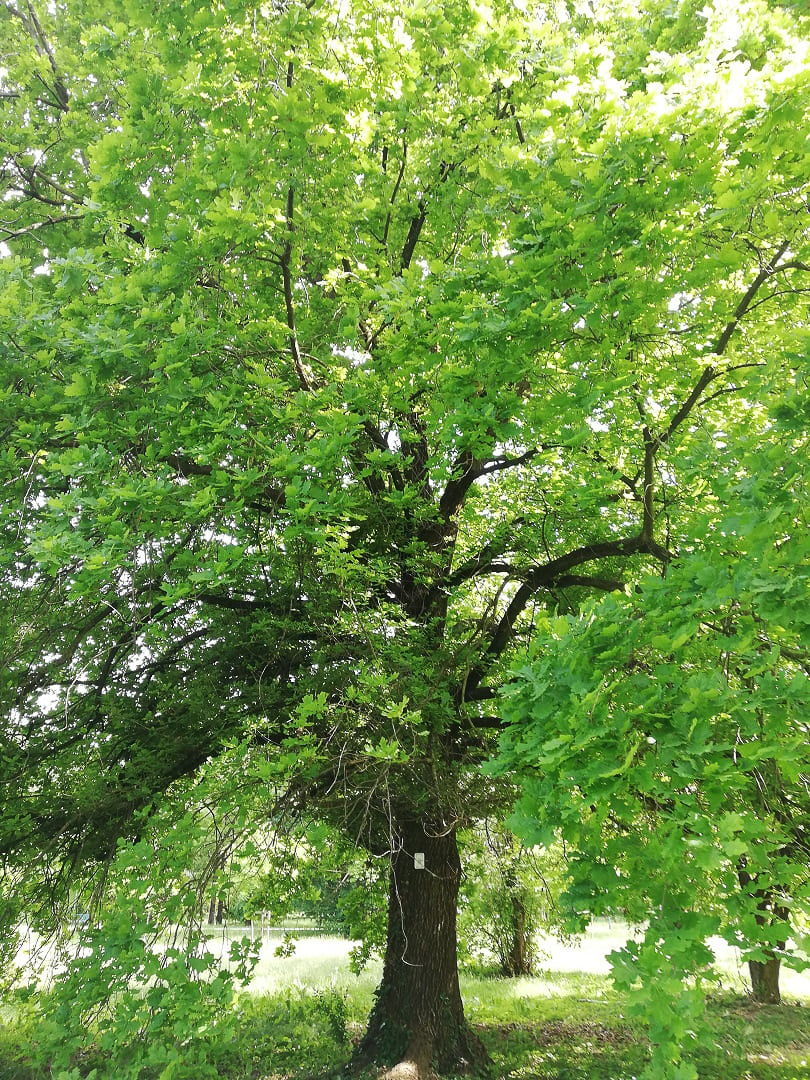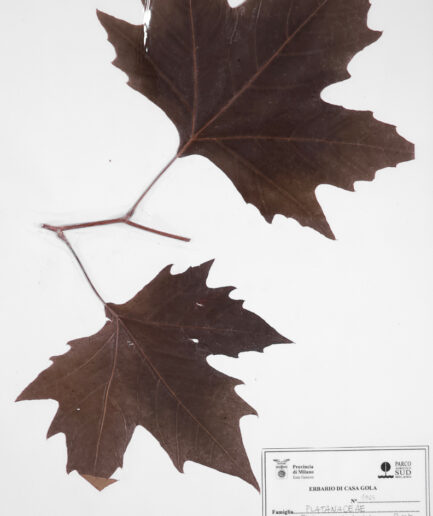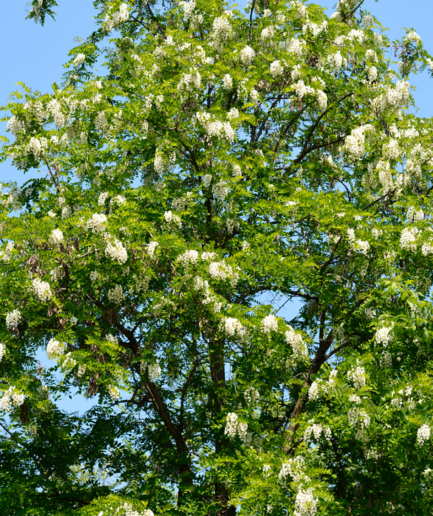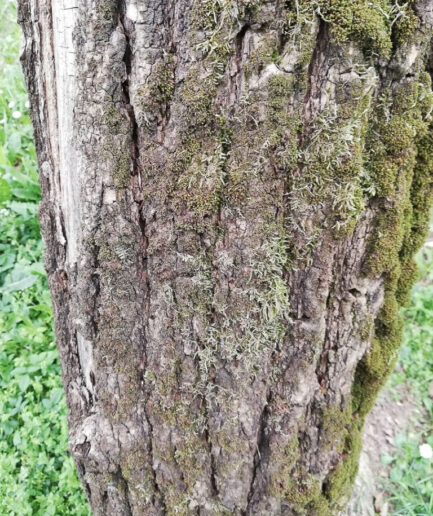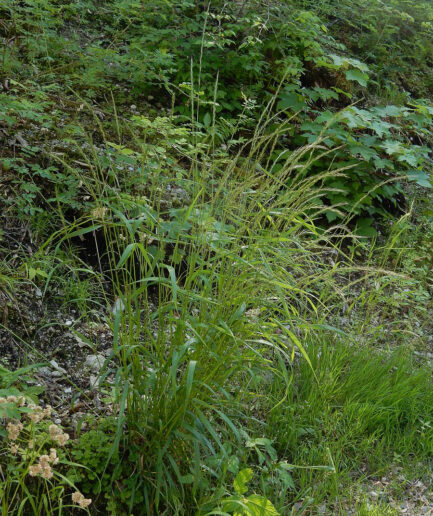Oak
Scientific name: Quercus robur L.
Family name: Fagaceae
MORPHOLOGY
Habit and dimensions: 30-35 m tall deciduous tree, very long-lived: can reach 500 years of age. Has very broad but not very dense crown.
Bark: smooth and grayish in young individuals, develops with age regular, deep furrows divided by shallow horizontal fissures.
Leaves: simple, alternate and obovate with lobed margins.
Flowers: male flowers united in pendulous catkins of 10-12 units, borne at the base of the branch. Female flowers grouped in spikes of 2-5, borne at the apex of the branch. They appear together with the leaves in spring.
Fruits and seeds: elongated oval-shaped acorns placed on long peduncles. They grow singly or in groups of up to 4 and ripen between September and October.
DISTRIBUTION AND HABITAT
Plant native to Europe. Farnia is found up to 1,000 m above sea level, often in association with hornbeam, field maple and black alder. It prefers the cool, fertile, deep soils of the lowlands and is quite demanding of light.
Farnia, along with white hornbeam, constituted the ancient original forests of the Po Valley, unfortunately reduced at present to a few hundred hectares to make way for intensive cultivation.
USE
The hard, long-lasting and easily processed wood is used in shipbuilding, construction and furniture. The bark can be used for tanning as it is rich in tannins.
The use of oak extracts is a widespread practice known since ancient times: acorn, roots and bark contain numerous active ingredients due mainly to the presence of tannins, flavonoids such as quercetin and, finally, very abundant resins and pectins. The resulting properties are known to both folk medicine and official science: oak is an anti-diarrheal, antihemorrhagic, analgesic, astringent, febrifuge, and antiseptic. It is also used to promote sweating, to facilitate healing, and to regulate bowel and sebaceous secretions.
Before taking any herbal product (drug or non-drug) for therapeutic or therapeutic-like purposes, you should always consult your physician in advance.
INTERESTING FACTS
The oak is very present in Greek and Roman mythology as a plant par excellence dedicated to the god Jupiter.
Acorns, allowed to dry and roasted, were used in the past as a very bitter substitute for coffee, and in times of famine always from the acorns an edible flour was also produced. Today their use as food for humans has all but disappeared; instead they are still used for animal feed.
Photo: Kindly provided by Valentina Gussoni


